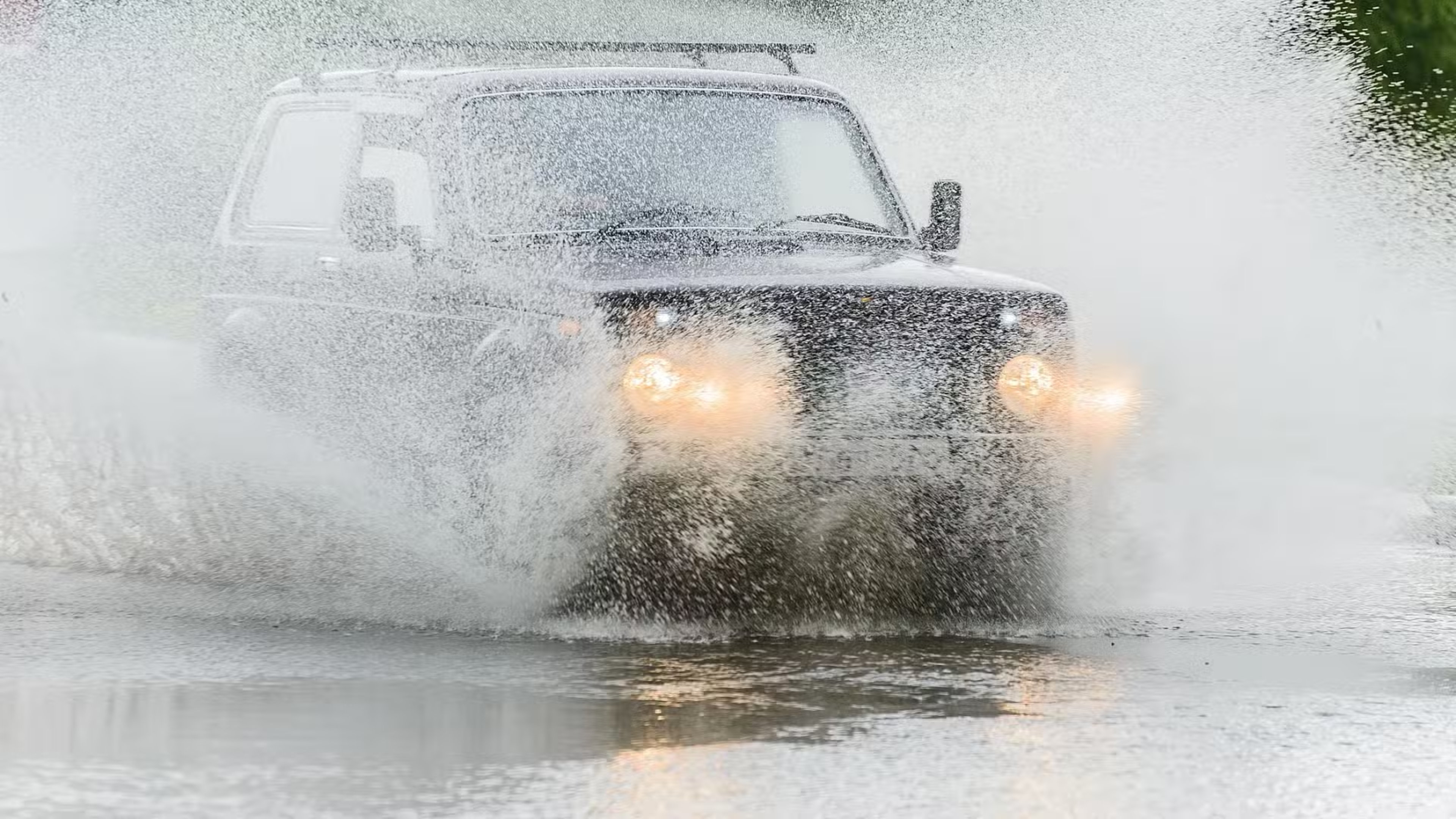What to Do if You’re Caught in Aquaplaning This Rainy Season

As the rainy season approaches in Australia, it’s important to be aware of the risks that come with driving in wet conditions. One of the most hazardous situations you could find yourself in is aquaplaning, which can catch you off guard if you're not prepared. But what exactly is aquaplaning, and how can you prevent it? Here’s everything you need to know to stay safe on the roads when the rain begins to pour.
What is Aquaplaning (Hydroplaning)?
Aquaplaning, or hydroplaning, occurs when a layer of water builds up on the road and prevents your tires from making proper contact with the surface. This can cause your vehicle to lose traction and skid, which is extremely dangerous because it leaves you with no control over your car.
It’s like one moment you're driving normally, and the next, your vehicle feels like it's floating on water. In severe cases, it can feel like you're driving a hovercraft, drifting along with no ability to steer or brake effectively. While partial aquaplaning may cause your car to veer off course and feel unstable, full aquaplaning results in complete loss of control.
What Causes Aquaplaning?
Aquaplaning happens when the tread on your tires can’t displace enough water, leading to a thin layer of water between the tire and the road surface. When this occurs, your tires lose traction and begin to skim across the water, rather than gripping the road. This is more likely to happen during heavy rain, especially if you're driving at higher speeds or have worn tires.

How to Prevent Aquaplaning
While aquaplaning may seem like an uncontrollable situation, there are several proactive steps you can take to minimize the risk:
1. Check Your Tires’ Tread
Your tires are your first line of defense against aquaplaning. The tread on your tires helps channel water away from the tire surface, allowing better contact with the road. If the tread wears down too much, the tire can’t displace water effectively.
In Australia, the legal tread depth for tires is 1.5mm. Check the wear indicators in your tires, which are small blocks of rubber built into the grooves to show how much tread is left. However, it’s important to check all sections of the tread, as tires can wear unevenly, especially on the inner or outer edges. If the tread is worn down to the indicators, it’s time to replace your tires.
2. Slow Down in Heavy Rain
Speed is one of the biggest factors in aquaplaning. The faster you go, the more likely it is that your tires will lose traction. As your car increases in speed, standing water builds up at the front of the tire, which can act as a barrier, preventing proper grip.
Studies have shown that aquaplaning is more likely to occur at speeds over 80 km/h, but the exact threshold depends on your vehicle’s weight, tire type, and tire pressure. To reduce the risk, slow down when driving in heavy rain and adjust your speed to the conditions.
3. Ensure Proper Tire Pressure
Driving with underinflated tires can increase the risk of aquaplaning. Underinflated tires have a smaller contact patch with the road, which means less rubber is touching the surface and more water is trapped beneath the tire. This makes it easier for the tire to lose traction.
Check your tire pressure regularly, especially before long trips or when bad weather is expected. Maintaining the correct tire pressure will improve grip and help prevent hydroplaning.
4. Switch Off Cruise Control
Cruise control may seem convenient, but it can be dangerous during rainy conditions. When your vehicle is set on cruise control, you may not be able to react quickly enough if you hit a patch of water. This makes it more difficult to adjust your speed or apply brakes as needed.
Always cancel your cruise control in wet weather to ensure you have full control of your vehicle.
What to Do if You’re Aquaplaning
Despite your best efforts, you might still find yourself aquaplaning. If this happens, remain calm and follow these steps:
- Keep the Wheel Straight: Do not try to steer immediately. Instead, keep the wheel straight to allow the car to pass over the water and regain traction.
- Lift Off the Throttle: Gently ease off the accelerator, but don’t slam on the brakes. Braking while aquaplaning can lock up your wheels, even if your car has ABS (Anti-lock Braking System), which may worsen the situation.
- Don’t Panic: It may feel like your car is out of control, but remember that this is just a temporary situation. As your car moves over the water, it will eventually regain traction.
- Steer Once You Regain Control: If your car starts to skid sideways, steer in the direction you want to go. Once the tires are back in contact with the road, apply the brakes gently to slow down.
- Stay Calm and Resume Driving Safely: After regaining control, take a moment to calm down and then continue driving cautiously. Don’t rush, and make sure you’re in full control before you continue your journey.

Conclusion
Aquaplaning is a serious risk during the rainy season, but with the right precautions, you can reduce your chances of experiencing it. By maintaining your tires, driving at safe speeds, and staying alert in wet conditions, you can protect yourself and others on the road. And if you do find yourself aquaplaning, staying calm and following the proper steps will help you regain control and continue your journey safely.
Stay safe on the roads, and remember to always drive to the conditions!
Ensure you search the Tynan stock through our link here.
Credit: Drive.com.au
